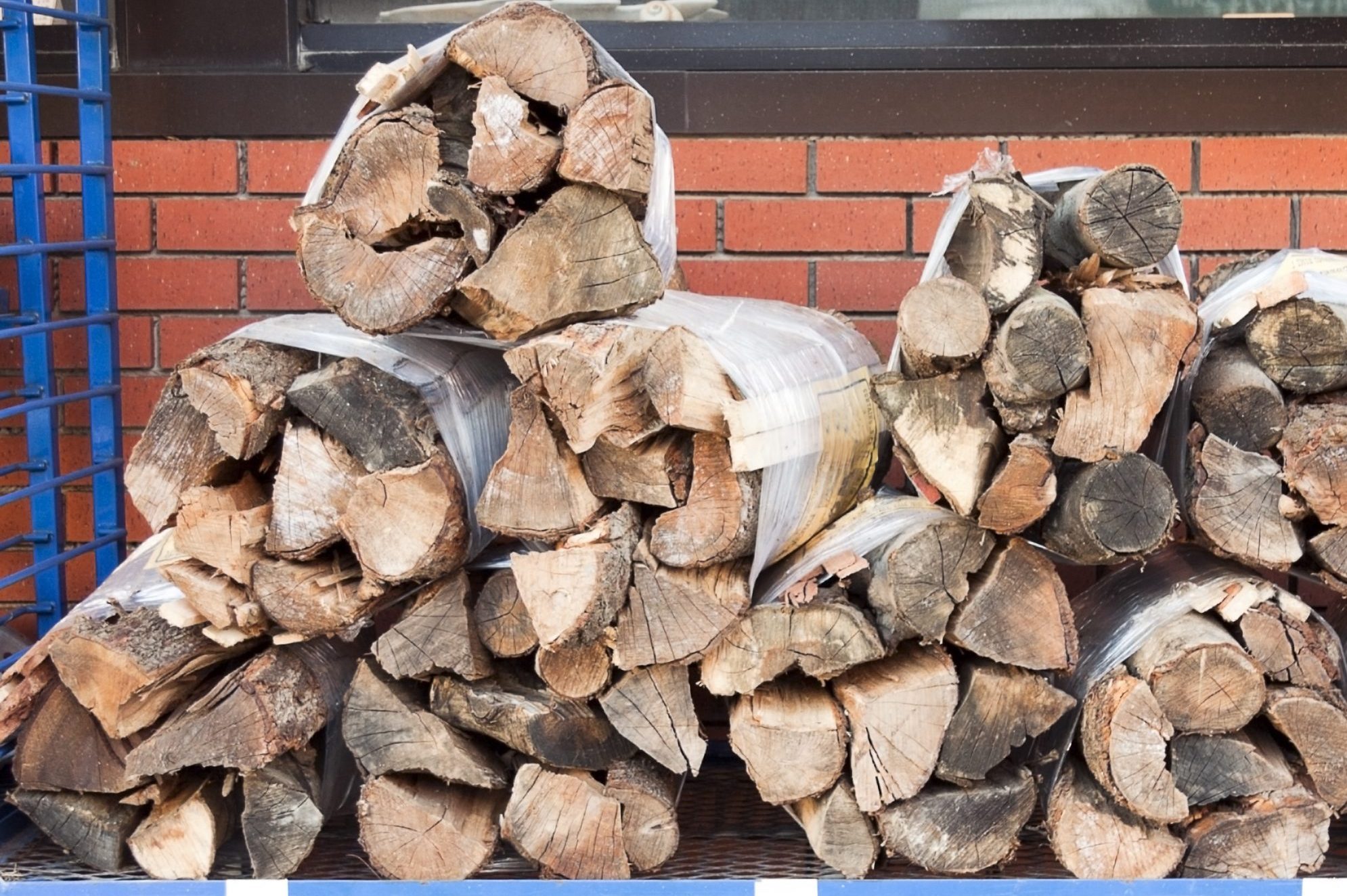Whether you've got an indoor fireplace or an outdoor fire pit, this is a great time of year to stock up on firewood!
Our editors and experts handpick every product we feature. We may earn a commission from your purchases.Learn more.


Whether you've got an indoor fireplace or an outdoor fire pit, this is a great time of year to stock up on firewood!
Our editors and experts handpick every product we feature. We may earn a commission from your purchases.Learn more.
If you live where the air turns crisp and cool in fall, chances are you know the joys of gathering around a wood-burning fireplace or bonfire with friends and family. Chances are you also know that sometimes getting firewood when you need it can be a chore.
We’re here to help. Here’s a quick overview of what to look for when buying firewood and five ways to stock up, with options to fit any budget or schedule.
On This Page
There are three main considerations when buying firewood: quality, quantity and cost.
First of all, it helps to know what kinds of wood burn most efficiently. For our purposes, it mostly comes down to whether the wood is dry, or has had excessive exposure to the elements and insects. If it’s the latter, better to pass it up.
Dry wood is what you want — it’s lighter, burns easily and produces less smoke. Wood dries two ways. “Seasoned” wood has been air dried for six months to a year; “kiln dried” wood is dried in a large oven. Kiln drying also kills insects and mildew on the wood. Green wood is one type of firewood not to burn, since it’s difficult to light and produces a lot of smoke.
Quantity is more complicated. The standards for firewood measurement vary by state. Search for the specifics for where you live. But generally, bulk firewood is measured by the cord or face cord.
A “cord” of wood is 128 cubic feet — usually eight feet long, four feet high and four feet deep. That’s a lot of wood, and many homeowners don’t want to buy that much.
A “face cord” is eight feet long and four feet wide, but only one log deep. Because there’s no exact agreement on how big a log is, a face cord’s size can vary. If the logs are 16 inches long, that face cord would be one-third of a cord.
You may also see firewood sold by the truckload, especially with less formal sellers. That’s a flat fee for how much firewood you can fit in the back of your pickup.
Season and location determines cost, which varies significantly. As of this writing, a supplier in Maine charges $295, one in Wisconsin $487, and one in Oregon $540.
There are a number of places to find fuel for your fire:
These bundles of firewood tend to be nicely seasoned and easy to move. Often wrapped in sturdy plastic with a handle on top, you’ll pay for the convenience of these bundles. But if you’re just looking for a few logs to throw on the fire pit that night, they’re a great option. To find one near you, keep an eye out as you pass gas stations and grocery stores in your area.
Special note: Firewood can spread insect or mildew infections if moved to a new area. Any transported firewood should be kiln-dried, and many state and national parks do not allow outside firewood to be brought in at all. Go to Dontmovefirewood.org to find a list of restrictions where you live.
Pros:
Cons:
Various distributors sell firewood commercially and to consumers. The links in the “Cost” section above are to distributors who sell to consumers regionally, offering pickup and firewood delivery options. There are also online distributors, from small boxes of logs on Amazon to boutique, white-glove delivery service where you can get one-third of a cord for $1,699!
Pros:
Cons:
Online groups and marketplaces like Craigslist, NextDoor and Facebook Marketplace turn your city into a giant garage sale. Check for deals posted by everyone from pros advertising regular sales to individual homeowners looking to clear up yard space.
Pros:
Cons:
Tree trimming services often set aside trunk sections for later resale to individuals. Call around or check out their website.
Pros:
Cons:
In some parts of the country, it’s common for entrepreneurial individuals with a pickup truck and some excess trees to split load up a truck and sell it door to door.
Pros:
Cons:
Stores like Lowe’s and The Home Depot sell lots of fire pits and outdoor living accessories, so it’s no surprise they stock firewood in season. They buy firewood in bulk, usually kiln-dried. Stop by or call your local stores to see if they’re selling wood this year.
Pros:
Cons:
This is a classic solution for DIYers! Set aside a garbage can or bin near your workshop and toss in any scrap wood for later burning. Remember that you should never burn pressure-treated wood, or wood that has been painted or stained. Both can release toxins in the smoke.
Pros:
Cons: